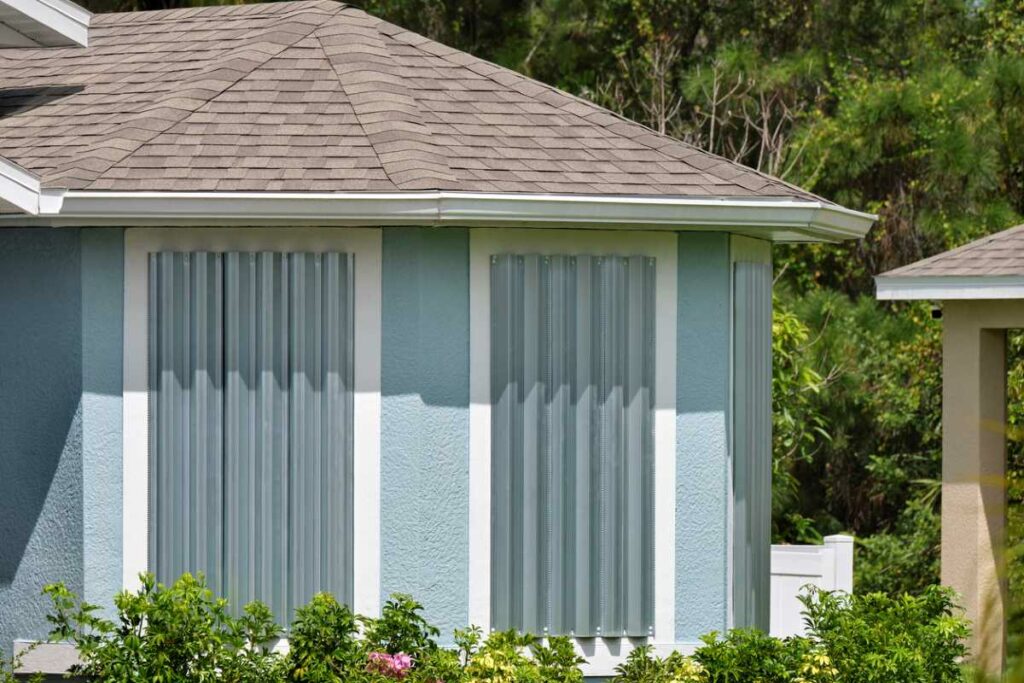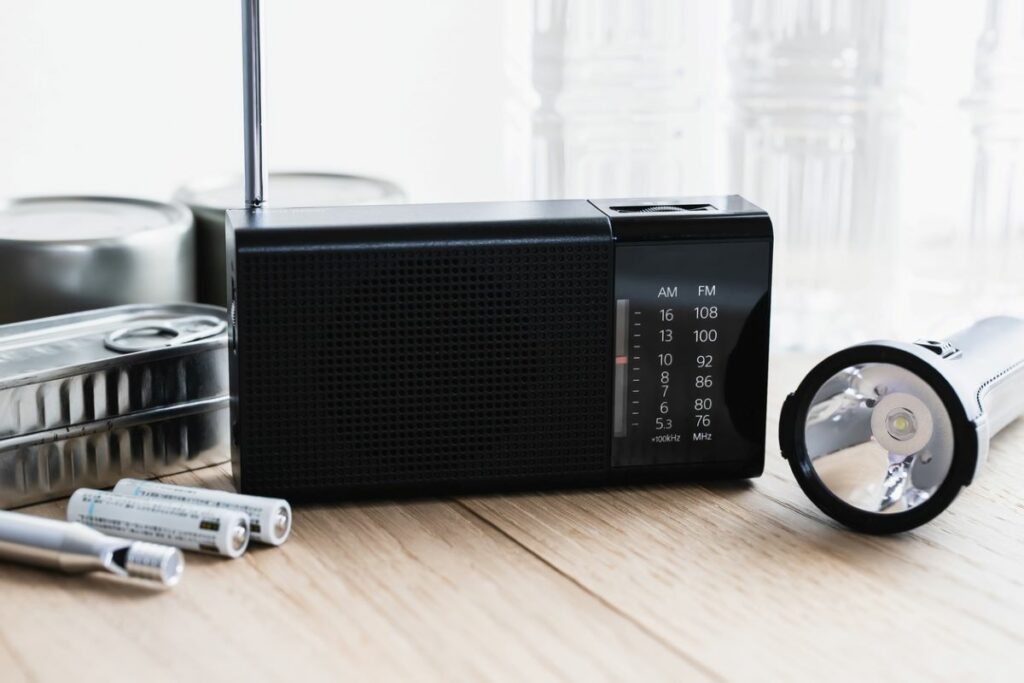Emergency Preparedness: Using Self Storage for Peace of Mind
Hurricanes are the costliest weather disasters in the United States, causing an average of $22.8 billion in damage since 1980—wielding devastating power, unleashing torrential rainfall, fierce winds, and menacing storm surges. Prioritizing hurricane preparedness is crucial to guarding yourself and your possessions, minimizing damage, and ensuring a swift recovery once the storm has passed.
Read our blog to learn how to create a prep list, stock a survival kit, and discover the benefits of an RV hurricane strap kit. You’ll even learn how storage units offer a convenient environment to store essential supplies.
Creating a Comprehensive Hurricane Prep List
Here is a comprehensive, step-by-step guide to help you create your hurricane prep list. Our guide features the essential items that you should consider including in your hurricane emergency kit so you and your loved ones are prepared for any potential impact.
Step 1: Assess Your Needs
The first step in our hurricane prep list is to consider how many people and pets are in your home to ensure you have all the supplies you need without going overboard. Remember to include any special medical requirements, such as prescriptions, medications, or medical devices.
Step 2: Build Emergency Food Kits
When putting together emergency food kits, it’s essential to keep the following in mind:
- Shelf life. Select kits with an extended shelf life so they remain usable for longer.
- Variety. Choose a combination of ready-to-eat meals, freeze-dried foods, and nonperishable snacks.
- Quantity. Plan for at least three days’ worth of food per person and pet in your household.
Step 3: Gather Common Nonperishable Food
- Canned goods. Like canned vegetables, fruits, beans, and meats
- Dry foods. Pasta, rice, cereals, and powdered milk
- Snacks. Nuts, granola bars, and dried fruits for quick energy
- Cooking supplies. Manual can opener, disposable utensils, and paper plates
Step 4: Collect Bottled Water
Plan for at least one gallon of water per person and pet per day to last for a minimum of three days. We recommend storing the water in clean, sealed bottles in a cool, dark place to maintain its freshness.
Step 5: Build a Stock of Medical Supplies
- First aid kit. Bandages, antiseptics, pain relievers, and burn ointments
- Prescriptions. At least a week’s supply of any necessary medications
- Personal hygiene items. Hand sanitizer, soap, and sanitary products

Step 6: Keep Emergency Gear on Hand
In case of power outages due to a hurricane, keeping a stock of emergency equipment is critical. Gear to gather includes:
- Flashlights. Store battery-powered or hand-crank flashlights.
- Batteries. Stock batteries in different sizes for flashlights and other devices.
- Multi-tool. Include a multipurpose tool for emergency repairs and utility needs.
- Radio. Keep a battery-powered or hand-crank radio for weather updates.
Step 7: Choose a Few Comfort Items
Gather plenty of blankets and comforters to keep each family member warm in case of a power outage. Pack spare clothes, sturdy shoes, and rain gear, and remember to store essential items like eyeglasses and contact lenses. Don’t overlook the importance of these items in your everyday life because they’ll be crucial during an emergency.
Step 8: Account for Special Necessities
- For infants. Baby formula, diapers, wipes, a toy or two, and a baby carrier
- For seniors. Hearing aids, mobility aids, essential medications or equipment, and extra glasses
- For pets. Pet food, water, a collapsible bowl, lease or harness, and any necessary medications
Step 9: Write an Evacuation Plan
As you develop your hurricane evacuation strategy, make sure to consider these crucial factors:
- Important documents. Store copies of IDs, birth certificates, insurance policies, Social Security cards, and bank information in a waterproof container.
- Evacuation routes. Plan multiple routes out of your area if roads are blocked, and keep a paper map with your gear.
- Communication plan. Designate a way to stay in touch with family members if you get separated.
Step 10: Regularly Update and Maintain Your Hurricane Prep Kit
Make it a routine to go through your food, water, and medications to ensure they’re fresh and ready to go. Adjust your kit accordingly and replace any used items as your family’s needs shift. Review your hurricane prep list and evacuation plan regularly with your family to keep everyone in the loop and ensure everyone is fully prepared when the storm hits.

The Role of Self Storage in Hurricane Preparedness
Having a natural disaster survival kit is essential, but it’s equally crucial to store it in a secure and easily accessible location. Storing hurricane survival kits, medical supplies, and survival gear in a self storage unit can help shield your belongings from weather-related damage.
Extreme weather and fluctuating temperatures can wreak havoc on your supplies. That’s where climate-controlled storage units come in. Their stable conditions are ideal for preserving and keeping your items pristine. During a hurricane, storage space is a game-changer.
Stocking and Organizing Your Storage Unit With a Survival Kit
Survival kit items you should consider keeping in your storage unit include:
- Medical supplies, including a first-aid kit
- Emergency gear, like flashlights, multi-tools, radios, blankets, and batteries
- Important documents copies and a digital backup on a flash drive
- Clothing and personal items, like shoes, rain gear, hats, glasses, contacts, and small comfort items
- Tools and supplies for repairs, including hammers, nails, duct tape, wrenches, tarps, and plastic sheeting
- Pet supplies like medications, blankets, toys, and anything else to keep them calm
Use clear plastic bins to keep your hurricane kits secure, and label each bin with its contents and the date they were packed. Make a detailed list of your supplies, and consider making a digital copy for your records. To maximize your storage space, arrange your items by category, such as medical supplies in one bin and emergency equipment in another.

Preparing Your RV With an RV Hurricane Strap Kit
Powerful winds during a hurricane pose a significant threat to RVs. Their tall shape and lightweight structure make them vulnerable to toppling or displacement. An RV hurricane strap kit is a must-have for securing your RV during hurricanes.
These kits come with heavy-duty straps, anchors, and tensioning devices to firmly anchor the RV to the ground. This can help keep it from getting knocked over by strong winds, which could otherwise cause severe damage or result in a total loss.
What To Do in a Hurricane: Safety Tips
If you’re not evacuating during a hurricane, it’s crucial to stay inside, away from windows and doors. Find shelter in a small interior room, bathroom, or closet, preferably on the lowest level of the building. This will help minimize the risk of injury from flying debris or strong winds. Keep your emergency food kit easily accessible and ensure your mobile devices are adequately charged. Use your phones sparingly to conserve battery life and stay updated with the latest weather information.
Once you have official confirmation that leaving the shelter is safe, be cautious of hazards like downed power lines, flood water, and debris. Inspect your property for any signs of damage, avoid entering any unstable structures, and document any damage you find for insurance purposes. If your home is unsafe to live in, contact local authorities or hurricane relief organizations for help.
Keep Your Hurricane Emergency Kits Preserved With Advantage Self Storage
Make sure your hurricane survival and emergency equipment kits are well-maintained and secure with cost-effective self storage solutions from Advantage. Our climate-controlled storage units are ideal for extending the longevity of your emergency kits, ensuring they remain in top condition and easily accessible in a safe and secure location.
Contact us today or find your nearest Advantage Self Storage facility to get started. You can also explore our FAQ page, storage blog, and first-time storage user’s guide for more details on the storage process.